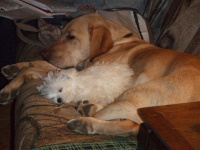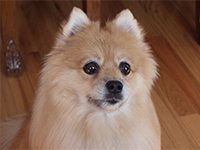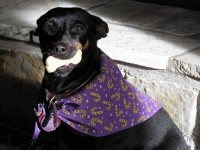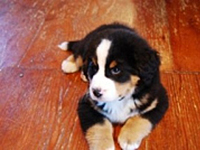This surgery removes the ovaries and the uterus. On the one hand, this is a routine surgery in that we do so many, but in fact, it's a major surgery in that deep anesthesia is needed and we need to open up the abdomen to get to the female sex organs. The best time to spay is between 4 and 6 months of age for both kittens and puppies.
The positive side of spaying: preventing unwanted puppies and kittens, no deadly uterine infections, no ovarian cancer, no mammary enlargement and preventin of breast cancer. The costs of treating all these potential problems are a lot more than the cost of spaying your pet.
Check In: We usually ask you to drop your pet off during the morning between 8 and 8:30 am on an empty stomach (no food past 6pm the night before, water is OK). Please take your dog for a walk in the morning to use the bathroom. We will ask you to sign a consent form allowing anesthesia to be used and ask if you are interested in pre-anesthetic blood work, pain medication and a microchip for your animal. Additional costs my include extraction of retained baby teeth, ear cleaning and treatment of fleas.
You can call the office between 1:00 and 2:00 to check in and we will update you on her condition and let you know when she can go home.
Check Out: When you arrive to pick up your animal we will have your bill ready, any medications needed and instructions on home care. You will need to keep your animal "quiet" for 7 to 10 days, which means leashed walks only to go out to the bathroom, no swimming or bathing and no licking at the incision. A remove suture appointment needs to be scheduled and is generally 7 to 10 days after surgery.
What to expect when animal home: After taking her home, she may be groggy from the anesthesia, so watch her closely around stairs and jumping on beds and couches. Please wait till she can "walk a straight line" before feeding, and start off with small amount of food and water. Pain medication can be given if she feels ready to eat. Contact office if there is any swelling, excess redness or "weeping" of blood or fluid at surgical site.




















